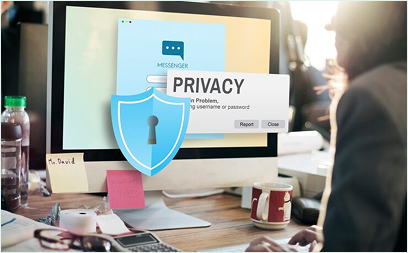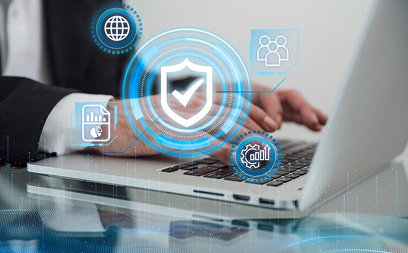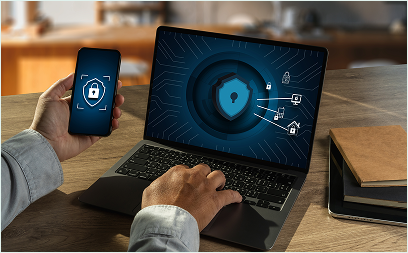Human-centred Cyber Security Awareness Training That Delivers Behavourial Change

Phriendly Phishing’s approach to learning is not to put technology first but put humans first with ‘human centred design.’
Phriendly Phishing’s award-winning course content is delivered with empathy, with the approach of “Train, Not Trick.” Most organisations deliver learning to highlight high-risk users. Instead, our model aims to change behaviour in a positive, sustainable manner that facilitates continuous learning and a positive learning culture and ultimately building cyber resilient cultures.
Our courses developed by Australian deep-domain experts to help Aussies and Kiwis navigate the phishing landscape. Enjoy onshore data sovereignty, localised email and course library and customer support.
Fill in the form to request a free demo from us!

Customised Learning Paths
Our Train not Trick Methodology steers away from non-compliance, humiliation, learner complaints and a culture of fear. It takes employees on their own unique journey with a fully-automated risk assessment, training and on-going practice campaigns.
Our learning model is human centered, avoiding stressful, high anxiety experiences. It’s learning delivered in an empathic and interactive way that helps people protect themselves and their organisation, making training more engaging and impactful.

The wave of digital transformation has brought unprecedented changes to the business sphere. As a result, security paradigms need to evolve as well. A workforce that is rapidly adapting to technology, but lacks security education, can inadvertently jeopardise your data.

Avoid playing a guessing game when it comes to security awareness. It’s time to sync up your team with a training program designed to make your entire workforce ‘cyber-fit’. Through robust and engaging training, we can turn potential weak spots into solid cheerleaders of your security strategy.

Empower and Train Your Team. Reduce Your Risk.
Whether you’re building internal capability, delivering outcomes for clients, or managing your existing program – Phriendly Phishing supports your journey to cyber resilience.
Give your workforce the tools to detect phishing threats and reduce human cyber risk. From phishing simulations to advanced reporting, manage everything in one intuitive platform.
“Your business can be wherever your people are. With our help, security surety can be there too.”

Lighten your load with Phriendly Phishing’s automated learning platform
Whether you’re building internal capability, delivering outcomes for clients, or managing your existing program—Phriendly Phishing supports your journey to cyber resilience.
Free up your IT team’s time with our fully automated training solution. Automatically re-enrol learners when you’re ready.
Track your organisation’s phishing risk, overall phishing awareness, historical trends and staff performance in one place.
Access training from any device with an internet connection. Our platform is optimised for mobile devices.
Drive awareness and behaviour change with bite-sized training that fits your team’s workflow.
Access real-time dashboards to report on risk scores, compliance, and progress.
New micromodules released as threat tactics and trends emerge and change.
Bite-sized micro-learning courses
Phriendly Phishing’s micro courses deliver engaging lessons fast—a quick bite that fuels your busy team and keeps the process positive and fresh.

Not sure whether to hire a scissor lift or a boom lift? This guide walks you through the different types of access equipment and helps you pick the best fit for your project.

Not sure whether to hire a scissor lift or a boom lift? This guide walks you through the different types of access equipment and helps you pick the best fit for your project.

Not sure whether to hire a scissor lift or a boom lift? This guide walks you through the different types of access equipment and helps you pick the best fit for your project.

Cultivate a cyber-savvy workforce that recognises information as an asset and knows their role in protecting it.

Outside your office, workers may miss or become desensitised to security. They’re often less clear about protocols and more likely to troubleshoot for themselves. Rein in ‘cowboy’ tendencies.

Don’t let your organisation fall victim to avoidable cyber security pitfalls.
Equip your team with the necessary ‘cyber smarts’ to navigate the digital landscape confidently and securely. Request a demo of our comprehensive security awareness training platform today and take the first step towards fortifying your company’s digital defences.
Our experts are ready to show you how our platform can elevate your workforce to new levels of security awareness, and all with a zero touch set up.
Click the button below to schedule your demo, and let’s start your journey to a safer, more secure digital environment together

See how Phriendly Phishing clients of all shapes and sizes have used our training to better protect their businesses.
Frequently Asked Questions
Here’s how to get your security awareness training programme started.
1. Make sure your entire security detail is documented
2. Give your employees regular security awareness training
3. Determine which security tools you’ll need, such as firewalls
4. Train employees to handle a data breach if one occurs
5. Make all employees aware of security compliance mandates
Look here to learn more about security awareness training.
Phriendly Phishing’s security awareness training for employees includes easy-to-learn modules on subjects such as:
- Information security
- Workplace security
- Remote working
- Device security
For the best, most consistent results, employees should be given security awareness training every four months.
Award-winning phishing simulation & cyber security training
Out of thousands of entries worldwide, Phriendly Phishing joined the winner’s podium at the 2025 LearnX Awards and more!









Don’t take our word for it

See some of our success stories

They strengthened security awareness to meet regulatory requirements, creating an ongoing program that has reduced risk and improved company-wide vigilance.

They rolled out an easy-to-use phishing program across a number of sites, giving employees light, effective training that has improved awareness and strengthened security.

Ongoing phishing training has built lasting cybersecure behaviours, improving employee confidence and reducing human risk across all 1,700 staff.





